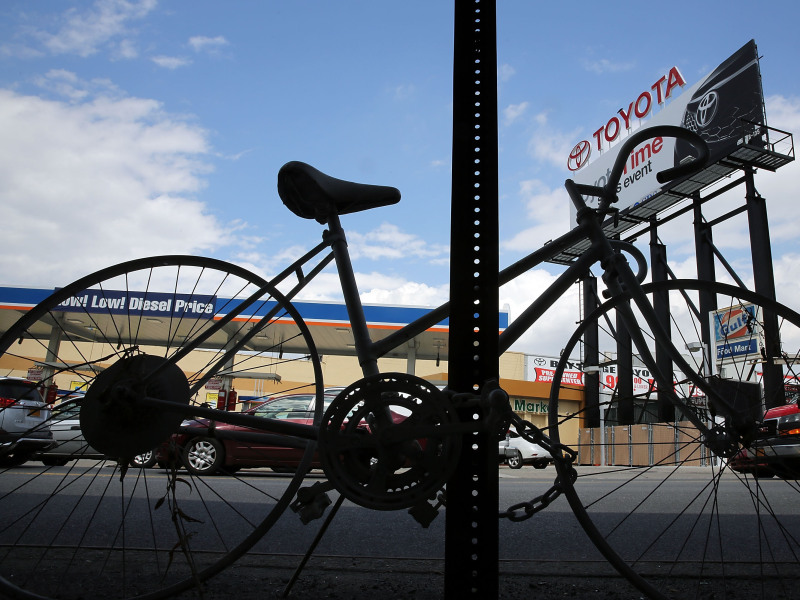More bicyclists are dying in collisions with cars. And a lot of those bikers are male, drunk and not wearing a helmet.
Those are the findings of a report released today by the Governors Highway Safety Association. The study tracked bike deaths between 2010 and 2012 -- the last year for which data are available. There are a few key findings:
- The number of bicyclists killed in motor vehicle crashes between 2010 and 2012 was up 16 percent, from 621 deaths to 722.
- Adult males are almost three-quarters of those bicyclists killed. (The study's author says he does not know what percentage of the total bicyclist population is adult male.)
- Children used to be most likely to die in bicyclist fatalities. Now adults are.
- More than two-thirds of bicyclists fatally injured in 2012 weren't wearing helmets.
- And more than a quarter of adult bicyclists who were killed in 2012 were alcohol-impaired. The study says, "Lack of helmet use and alcohol impairment have been and continue to be major contributing factors in bicyclist deaths."
NPR spoke with Dr. Allan Williams, who authored the study for the Governors Highway Safety Association. Williams says this uptick in bike deaths stands out.
"[Car deaths] were stable during that period," he said. "So this is a bit of an anomaly." Williams did point out that bike deaths are still a very small number, only 2 percent of total motor-vehicle-involved deaths, according to his research.
Williams says the main reason for the increase is that more people are biking. But he said there are no hard data yet on whether things like the rise in popularity of bike-sharing services have contributed to more deaths.

9(MDAxOTAwOTE4MDEyMTkxMDAzNjczZDljZA004))